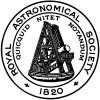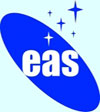Understanding substellar populations and atmospheres: from brown dwarfs to exo-planets
Principal contact: B. Burningham (b.burningham@herts.ac.uk)
Organisers: B. Burningham (Hertfordshire, UK), J. Farhi (Leicester, UK), M. Gillon (Geneva, Switzerland), D. Homeier (Goettingen, Germany), N. Lodieu (IAC, Spain), J. Patience (Exeter, UK), D. Pinfield (Hertfordshire, UK), D. Pollacco (QUB, UK), I. Snellen (Leiden, The Netherlands)
The study of exo-planets has progressed to the point that direct detection of these objects via imaging has become a reality. Recent results have provided exciting images of very low mass companions, and ongoing and future surveys will further explore the population of planets in wide orbits and the properties of their atmospheres. However, transiting planetary systems are currently the most important source of information about the physics and composition of exo-planetary objects. Instrumentation under construction for 8m telescopes and planned future facilities such as the E-ELT and JWST will greatly extend the capabilities of direct imaging planet searches, and studies of transiting planets.
The discovery of free-floating sub-stellar objects with effective temperatures as low as 500K, and future discoveries of objects cool enough to harbour water clouds, provide an alternative window on the physics of cool sub-stellar atmospheres. Without the glare of a nearby bright primary star, these objects provide ideal laboratories for improving the atmospheric models required to effectively interpret observations of cool giant exo-planets.
In this series of five sessions we aim to bring together recent cutting edge observations and models
of substellar atmospheres from both the brown dwarf and exo-planet communities, and discuss capabilities
anticipated with future instruments.
Scientific Programme
| Monday 20th April | ||
| 11:00 | Model Atmospheres fo Brown Dwarfs and Extrasolar Giant Planets | France Allard |
| 11:30 | The PHOENIX BT-Settl Models of Brown Dwarf and Gas Giant Planet Atmospheres | Derek Homeier |
| 11:50 | An Ammonia Line List for Modelling Brown Dwarfs and Exoplanet Atmospheres | Bob Barber |
| 12:10 | Mid Infrared Variability in Binary Brown Dwarfs | Michael Sterzik |
| Monday 20th April | ||
| 14:00 | Cool Benchmarks Down to the Water Cloud Regime | Ben Burningham |
| 14:20 | Testing Substellar Models with Dynamical Mass Measurements | Trent Dupuy |
| 14:40 | Substellar Companions to White Dwarfs in UKIDSS | Paul Steele |
| 15:00 | Masses and Radii of Brown Dwarfs in Interacting Binaries | Stuart Littlefair |
| 15:15 | Low-Mass Object in Moving Groups | Maria-Cruz Galvez-Ortiz |
| Monday 20th April | ||
| 16:30 | ESO AO Instrumentation for BD and Exoplanet Research | Markus Kasper |
| 17:00 | UKIRT Planet Finder | Hugh Jones |
| 17:15 | The OmegaCAM Transit Survey - Revised Survey Strategy and Early Results | Johannes Koppenhoefer |
| 17:30 | High Contrast Observations with EPICS (ExoPlanet Imaging Camera and Spectrograph) | Graeme Salter |
| 17:45 | Measuring the Frequency and Composition of Extrasolar Minor Planets | Jay Farihi |
| Tuesday 21st April | ||
| 11:00 | Direct Imaging of Multiple Planets Orbiting HR 8799 | Jenny Patience |
| 11:20 | Homogeneous Comparison of Planet Candidates Imaged Directly | Ralph Neuhaeuser |
| 11:45 | Transiting Planets: from Hot Jupiters to Super-Earths | Elaine Simpson |
| 12:10 | Detection of a Transit by the Eccentric- Orbit Planetary Companion to HD 80606 | Steve Fossey |
| Tuesday 21st April | ||
| 14:00 | Transiting exoplanets from the WASP-South Survey | Coel Hellier |
| 14:20 | The Spitzer/HARPS Search for Nearby Transiting Rocky Planets | Michael Gillon |
| 14:40 | Groundbased Observations of Hot-Jupiter Atmospheres | Ignas Snellen |
| 15:00 | New Observations and Modelling of the Exoplanets HD 189733b and HD 209458b | Giovanna Tinetti |
| 15:15 | Evidence for a Lost Population of Close-in Exoplanets | Peter Wheatley |










